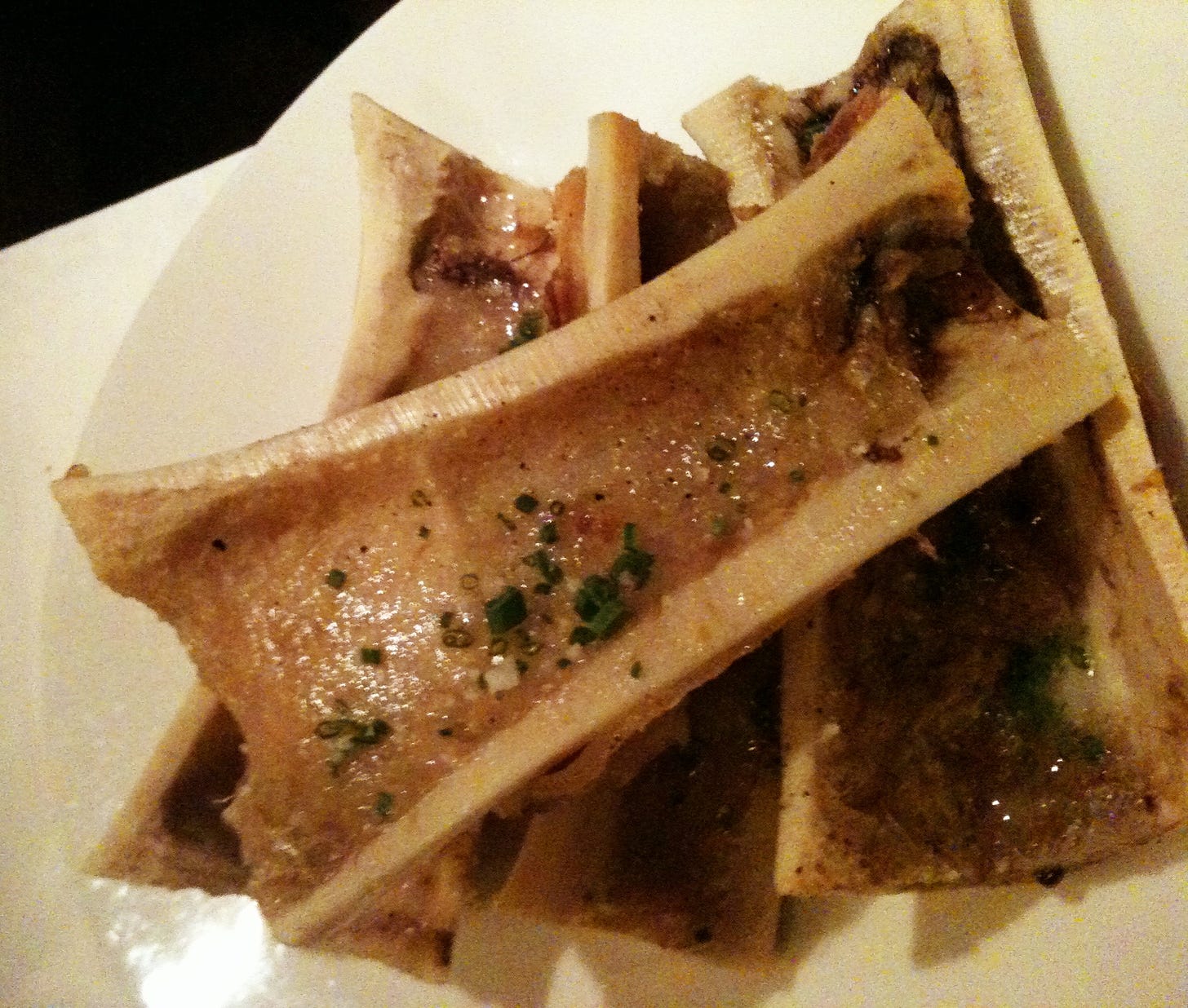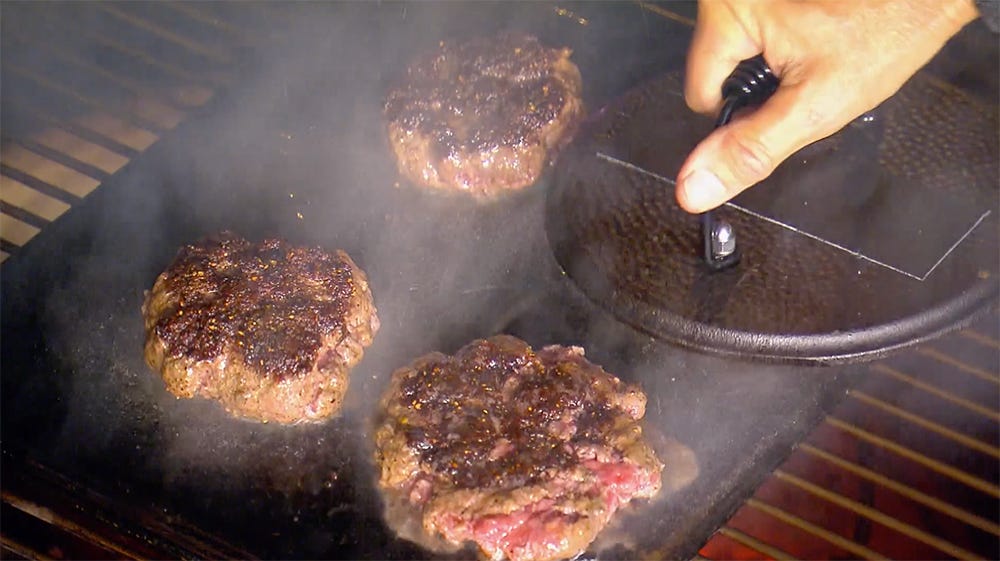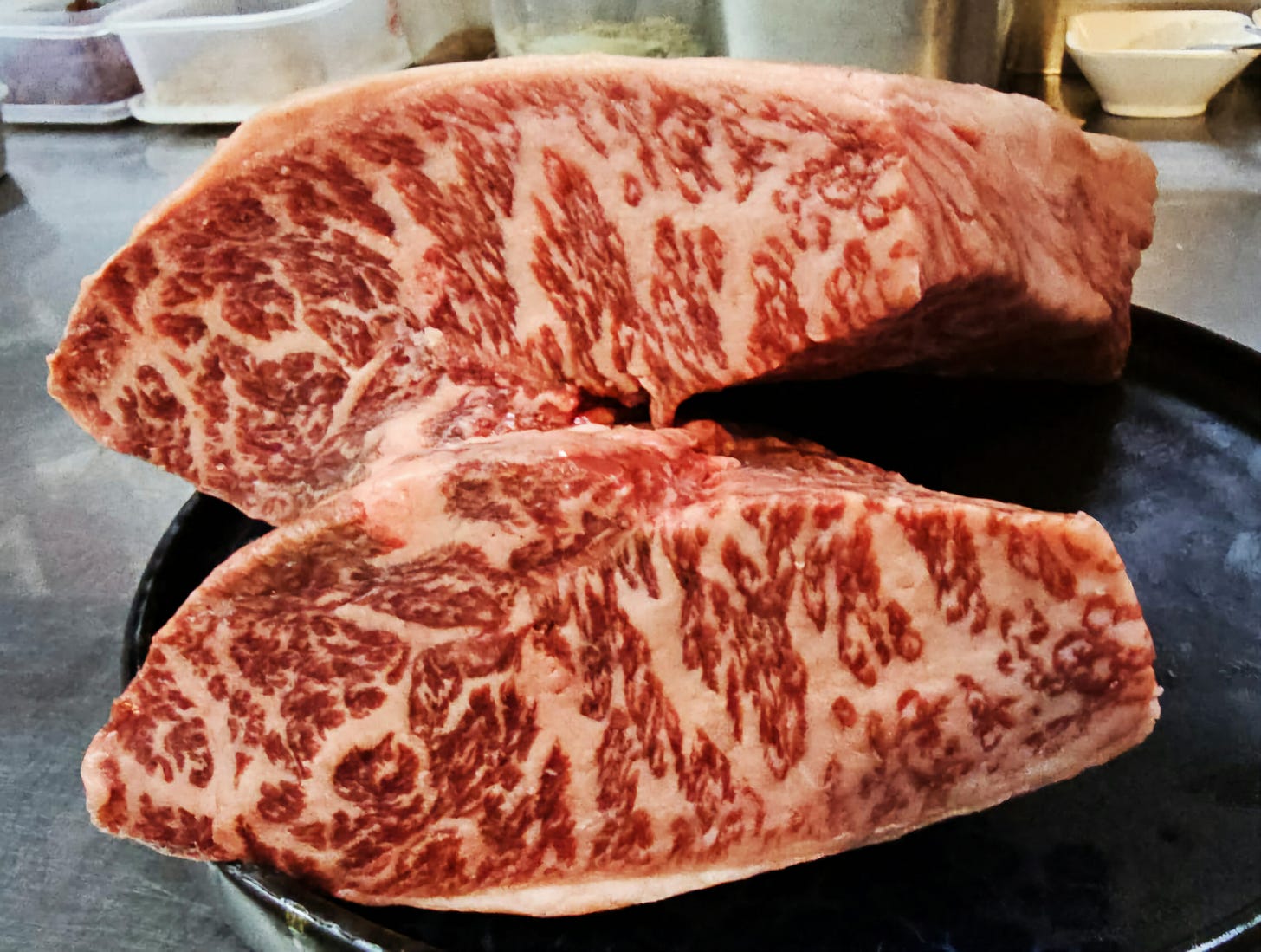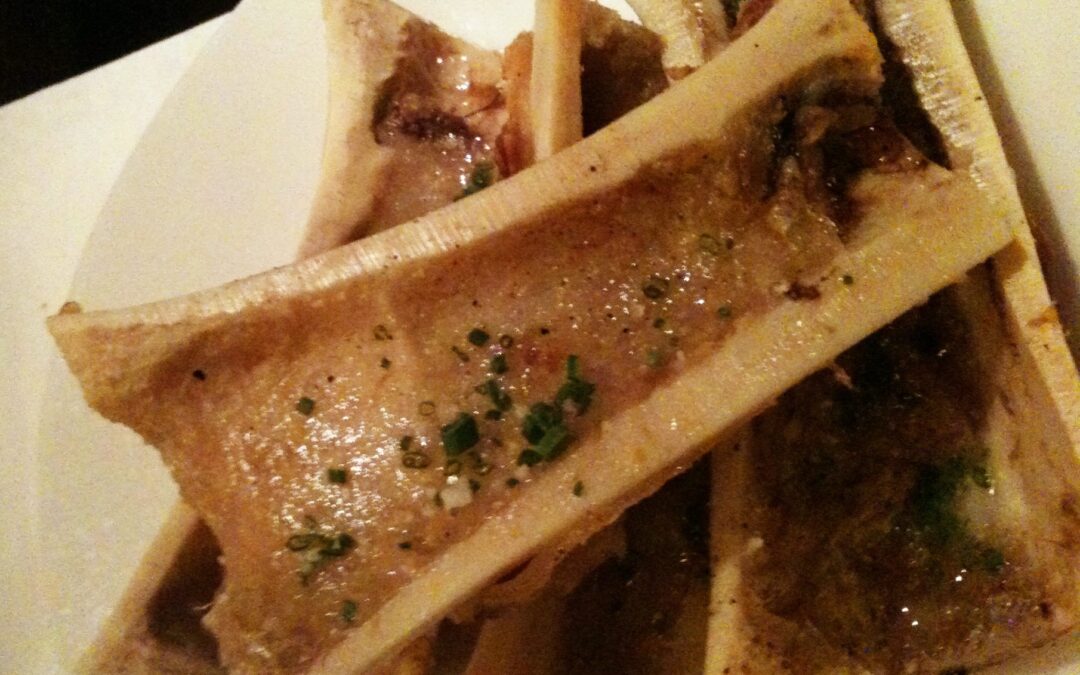
by lspeed | Aug 10, 2025 | KNOWLEDGE: MEAT ESSENTIALS
Bone Marrow, an overlooked ingredient, makes for some of the more interesting steakhouse dishes. Seasoned chefs learn to understand its value, and have started to take it on the narrow road to Haute Cuisine. Across continents, however, local cooks have used marrow in myriad ways and for centuries, not just to flavor broths, but to anchor dishes that reflect their culture and culinary history.
Let’s look at some of them:
France: Os à Moelle
In French cuisine, bone marrow isn’t a novelty, it’s a building block. Os à Moelle (Roasted Marrow Bones), appear frequently in traditional bistro cooking. The technique is simple: beef bones are cut canoe-style or crosswise and roasted until the marrow becomes molten. It’s served with sea salt, grilled bread, and often a parsley salad with capers or shallot vinaigrette to balance the richness. Beyond stand-alone dishes, marrow is folded into sauces, such as Sauce Bordelaise, where it enriches a red wine and shallot reduction poured over grilled meats.
Italy: Ossobuco alla Milanese
In Milan, bone marrow is the center poece of Ossobuco, a slow-braised veal shank. The bones are cross-cut, allowing the marrow to seep into the braising liquid as it cooks with white wine, aromatics, and sometimes tomato. What’s left is a fork-tender cut of meat and a softened marrow core that’s often spooned out and eaten directly from the bone. Traditionally served with saffron risotto, Ossobuco relies on marrow not just for richness but for mouthfeel and finish.
Mexico: Tuétano
Mexican chefs have created Tuétano for generations. In rural kitchens and street-side taquerías alike, marrow bones are split, roasted, and served with warm corn tortillas, salsa, lime, and fresh herbs. The marrow is scooped onto the tortilla and eaten like a taco. In traditional soups like Caldo de Res, marrow bones are simmered for hours, forming the backbone of the broth. The flavor is unfiltered and comforting.
Vietnam: Phở Bò
Vietnamese Phở isn’t just an iconic national noodle soup, it’s a masterclass in bone broth technique. In Phở Bò, marrow bones simmer gently for up to 12 hours with spices like star anise, clove, and charred ginger and onion. The slow extraction of marrow gives the broth its signature sheen and silkiness. In some Hanoi shops, cooks serve roasted or boiled marrow bones alongside the bowl. Diners are encouraged to scoop the marrow directly onto the noodles or enjoy it with a splash of lime.
Philippines: Bulalo
Bulalo, a beef shank and vegetable soup, is made by simmering large marrow bones with sweet corn, cabbage, potatoes, and onions. The bones infuse the broth with fat and body, while the marrow itself is prized by diners. Bulalo is a communal dish, served hot in big bowls, often shared among family or friends. Eating the marrow is part of the fun, usually done with a spoon.
United Kingdom: Traditional Bone Dishes
British cooking sees marrow in soups and pies. Dishes like Beef Shin and Marrowbone Stew, or Mince and Marrowbone Pie reflect practical, resourceful use of animal parts. In earlier centuries, marrow was also used as a spread, much like butter, on toast. Modern British chefs, into the reviving of nose-to-tail dining, have reintroduced marrow to menus. Fergus Henderson’s roast bone marrow with parsley salad and sourdough became an iconic dish, proving that even in minimal presentation, marrow can deliver maximal flavor.
Indonesia: Sop Buntut
Indonesia oc tail soup, sop buntut, is a familiar way to enjoy marrow-infused broth. While the oxtail meat is the main protein, the bones release collagen and marrow during cooking, creating a broth that is both clear and rich. The seasoning of clove, nutmeg, garlic, and fried shallots balances the marrow’s natural fattiness. Sop buntut is often garnished with a squeeze of lime or a spoonful of sambal. The marrow provides the base note, anchoring the soup in comfort and depth.
Argentina: Asado con Tuétano
In Argentina, bone marrow shows up at the grill. During a traditional Asado (the national barbecue ritual) large beef bones filled with marrow are placed directly on the grill alongside ribs, sausages, and steaks. The marrow bubbles and smokes in its cavity, picking up flavor from the fire. Grillers often serve it simple, with coarse salt and a bit of chimichurri. Diners scoop it onto bread or eat it straight from the bone. In some regions, marrow is even used as a natural basting agent for meats mid-grill to enhance flavor and juiciness.
Brazil: Mocotó and Feijoada
In Brazil, one marrow-rich dish is Mocotó, a stew made from cow’s feet and marrow bones, slow-cooked with beans, vegetables, and sometimes cassava. The gelatin from the bones thickens the broth naturally, and the marrow softens into it, giving the dish its comforting richness. And Feijoada, Brazil’s famous black bean stew, sometimes includes marrow bones along with various pork cuts. Though not always visible in the final dish, the marrow contributes to its complexity, especially when cooked over a low fire for hours.
Image Credit: https://commons.wikimedia.org/w/index.php?curid=131078009
_ _ _
© CHURRASCO PHUKET STEAKHOUSE / ALL RIGHTS RESERVED
Reprinting, reposting & sharing allowed, in exchange for a backlink and credits
Churrasco Phuket Steakhouse serves affordable Wagyu and Black Angus steaks and burgers. We are open daily from 12noon to 11pm at Jungceylon Shopping Center in Patong / Phuket.
We are family-friendly and offer free parking and Wi-Fi for guests. See our menus, reserve your table, find our location, and check all guest reviews here:
https://ChurrascoPhuket.com/
#Churrascophuket #jungceylon #phuketsteakhouse #affordablewagyu #wagyu
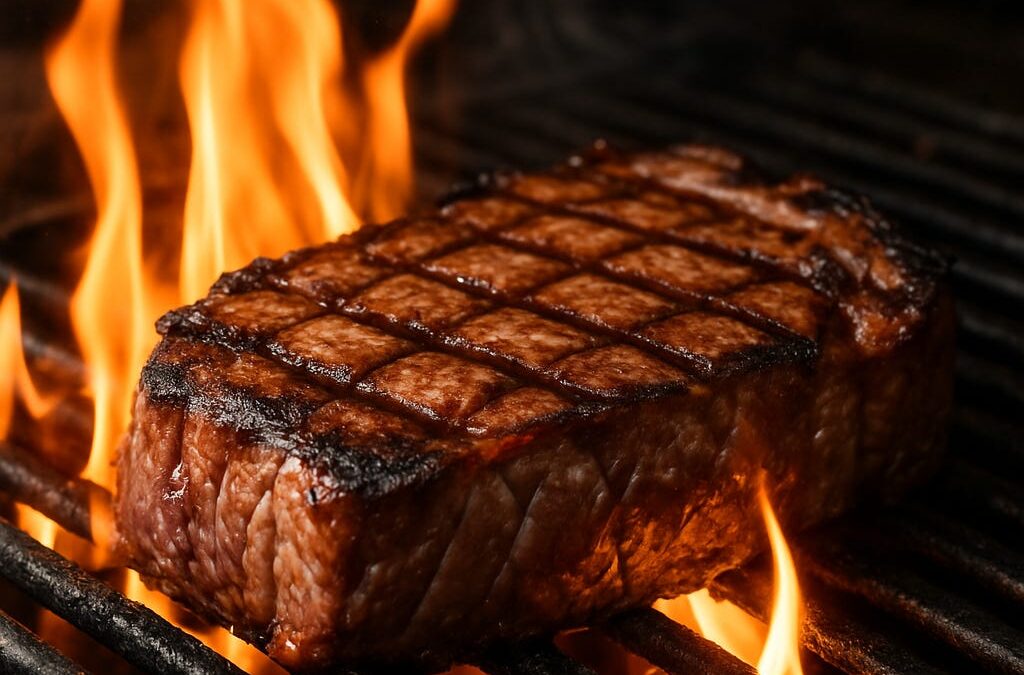
by lspeed | Jul 27, 2025 | KNOWLEDGE: MEAT ESSENTIALS
Why do seared steaks taste so irresistible? It’s thanks to the Maillard reaction, a chemical dance between amino acids and sugars that occurs when food hits high heat. Named after French chemist Louis-Camille Maillard, it creates complex flavor compounds that define the savory depth of cooked foods.
What Is It?
The Maillard Reaction, indispensable when cooking a great steak like ours, begins around 140°C and intensifies up to 165°C. It produces hundreds of different flavor compounds, depending on the type of protein, sugar, cooking time, and temperature. These compounds then break down into even more nuanced aromas and flavors, creating everything from the nuttiness of brown butter to the crusty edge of a baguette. The rich and savory result is often described by chefs using the Japanese term “umami”, a depth that’s neither sweet, sour, bitter, nor salty but satisfying.
For example, consider a burger. The interior remains relatively bland if it’s simply steamed, but toss that patty onto a hot grill, and the exterior quickly develops a brown, crackly crust. That crust isn’t just texture, it’s a chemical medley of grilled, roasted, and meaty notes, only made possible by the Maillard reaction. The same principle applies to countless other foods: roasted meats, pan-seared scallops, toasted marshmallows, baked cookies, even malted barley in beer production.
Maillard vs. Caramelization
It’s easy to confuse the Maillard reaction with caramelization, but they’re fundamentally different processes. Caramelization involves only sugar and typically begins at higher temperatures (around 170°C). Think of the difference between toasted bread (Maillard) and flan’s burnt-sugar topping (caramelization). Both contribute to browning, but the Maillard reaction is more diverse in flavor and more central to savory cooking.
In Modern Cuisine
Understanding the Maillard reaction isn’t just for chemists, it’s crucial knowledge for serious chefs, food scientists, and even coffee roasters and brewers. Modernist cuisine has elevated this awareness further, using tools like Sous Vide circulators and blowtorches to manipulate browning in highly controlled environments.
For example, a sous vide steak cooked at 54°C won’t undergo the Maillard reaction during its water bath, but a quick sear in a hot pan or blast with a torch afterward delivers the flavorful crust. This combination ensures perfect doneness with the added depth of Maillard browning.
Coffee and chocolate industries rely heavily on this reaction during roasting, tuning times and temperatures like a composer shaping a score. A slightly shorter roast can mute desirable compounds; too long, and bitterness or burnt flavors dominate.
When It Goes Too Far
Like many good things in cooking, things can go wrong. Extended browning or excessive heat can turn complex flavor into char and bitterness. And it’s not just about taste—overcooking can also produce potentially harmful compounds like acrylamide, particularly in starchy foods like French fries or potato chips. Moderation and control are key, so is understanding when to coax the reaction to peak performance and when to pull back.
It’s not just about browning—it’s about balance.
Image Credit: https://churrascophuket.com
_ _ _
© CHURRASCO PHUKET STEAKHOUSE / ALL RIGHTS RESERVED
Reprinting, reposting & sharing allowed, in exchange for a backlink and credits
Churrasco Phuket Steakhouse serves affordable Wagyu and Black Angus steaks and burgers. We are open daily from 12noon to 11pm at Jungceylon Shopping Center in Patong / Phuket.
We are family-friendly and offer free parking and Wi-Fi for guests. See our menus, reserve your table, find our location, and check all guest reviews here:
https://ChurrascoPhuket.com/
#Churrascophuket #jungceylon #phuketsteakhouse #affordablewagyu #wagyu
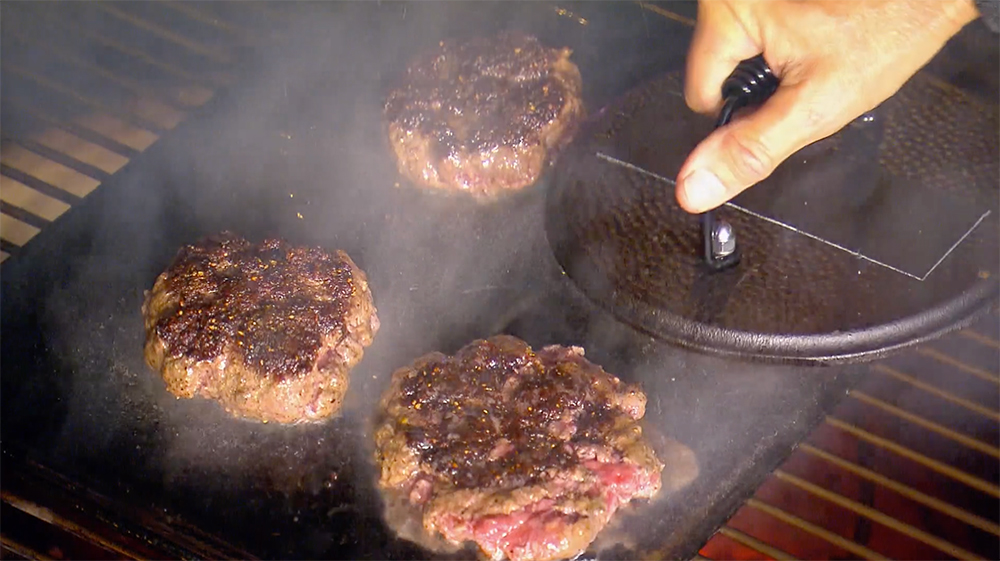
by lspeed | Jul 13, 2025 | KNOWLEDGE: MEAT ESSENTIALS
In recent years, the term Smashburger has become a fixture in conversations about casual dining and street food. It doesn’t refer to a brand (though one exists with the same name), but to a specific burger preparation method – flattening a ball of ground beef onto a hot griddle to create a thin, crisp-edged patty. The technique is straightforward, but its impact on texture and flavor has made it a fast rising star among cooks and consumers.
What Exactly Is It?
A Smashburger begins with a small portion of ground beef—often 3 to 4 ounces—rolled into a ball and placed on a very hot flat surface. Within seconds, it’s pressed down firmly with a metal spatula or a burger press. The result is a thin patty with increased surface area, allowing for more browning, which is where much of the flavor develops.
This browning process, known as the Maillard reaction, is key. The seared crust contrasts with the interior of the patty, which remains relatively juicy if cooked quickly. Cheese is often added while the meat is still on the grill, and toppings are typically minimal: pickles, sliced onions, a simple sauce, and a soft bun are common choices.
Origins & Context
The smashburger style isn’t new. Variations of it have existed in American diners and roadside burger joints for decades. Places like Dairy Cheer in Kentucky or Steak ’n Shake have long served thin, crispy-edged patties cooked on flattops. In parts of the Midwest and the South, it was standard practice to flatten burgers on the griddle, particularly in Oklahoma, where onions were pressed into the meat as it cooked.
Kenji López-Alt, a well-known food science writer, helped popularize the concept in the 2010s by explaining the chemistry behind the crust. He demonstrated that smashing the patty within the first 30 seconds on a hot surface produces the best results. Any longer and juices start escaping prematurely. Chefs began emphasizing the method and explaining the science behind why it produced a particular result. The real interest came when food culture was shifting toward minimalism and a focus on core ingredients. The Smashburger fit that ethos well.
Why It Caught On
Several factors contributed to the broader popularity of smashburgers:
-
Speed: Thin patties cook quickly, making them suitable for fast-paced kitchens and pop-ups.
-
Flavor: The thin crust formed during searing delivers a strong umami note that appeals to many.
-
Simplicity: The preparation requires no specialized ingredients or equipment beyond a flat surface and a spatula.
-
Visuals: Videos and social media posts showing the sizzling and smashing process helped fuel interest, particularly among younger audiences.
In many ways, the rise of the Smashburger coincided with broader trends in food: a preference for “authentic” or “honest” cooking, fewer ingredients, and visible technique.
Regional Variations
Though the core method is consistent, there are several regional and stylistic variations:
-
Oklahoma-style: Thinly sliced onions are smashed into the patty while it cooks, resulting in a slightly sweet, browned topping integrated into the meat.
-
California-style: Often layered with lettuce, tomato, grilled onions, and a mayonnaise-based sauce, loosely modeled after the In-N-Out style.
-
Multiple stacks: Some vendors serve double or triple smashed patties in a single burger for added texture and flavor.
Some operators experiment with different beef blends (such as brisket or chuck), cheeses, or sauces, but the underlying structure remains the same.
International Reach
The Smashburger style has moved beyond its American roots. Burger restaurants and food trucks across Europe, Asia, and Australia now offer smashed patties as part of their menus. In some cases, it’s marketed as an alternative to thicker gourmet-style burgers; in others, it serves as a reinterpretation of fast food classics.
In the UK and Australia, small independent chains have adopted the method with local beef and often pair it with craft beer. In places like Thailand, Japan, and South Korea, the method appeals to both expats and locals interested in American food trends. Online exposure has played a key role in spreading awareness.
What Next?
Whether the Smashburger is a passing trend or a lasting staple is to be seen. Its minimal ingredient list and speed of preparation suggest it’s likely to remain popular, particularly in small kitchens or high-volume settings. As with many food trends, its staying power will depend on continued consumer interest and how restaurants adapt or innovate within the format. At its core, the Smashburger is a return to basic cooking techniques applied with care and attention. It’s not a reinvention of the burger, but a refinement of something that’s been around for a long time.
And very soon, you will be able to enjoy it at Churrasco Phuket Steakhouse ….
Image Credit: https://barbecuebible.com/recipe/the-smash-burger/
_ _ _
© CHURRASCO PHUKET STEAKHOUSE / ALL RIGHTS RESERVED
Reprinting, reposting & sharing allowed, in exchange for a backlink and credits
Churrasco Phuket Steakhouse serves affordable Wagyu and Black Angus steaks and burgers. We are open daily from 12noon to 11pm at Jungceylon Shopping Center in Patong / Phuket.
We are family-friendly and offer free parking and Wi-Fi for guests. See our menus, reserve your table, find our location, and check all guest reviews here:
https://ChurrascoPhuket.com/
#Churrascophuket #jungceylon #phuketsteakhouse #affordablewagyu #wagyu
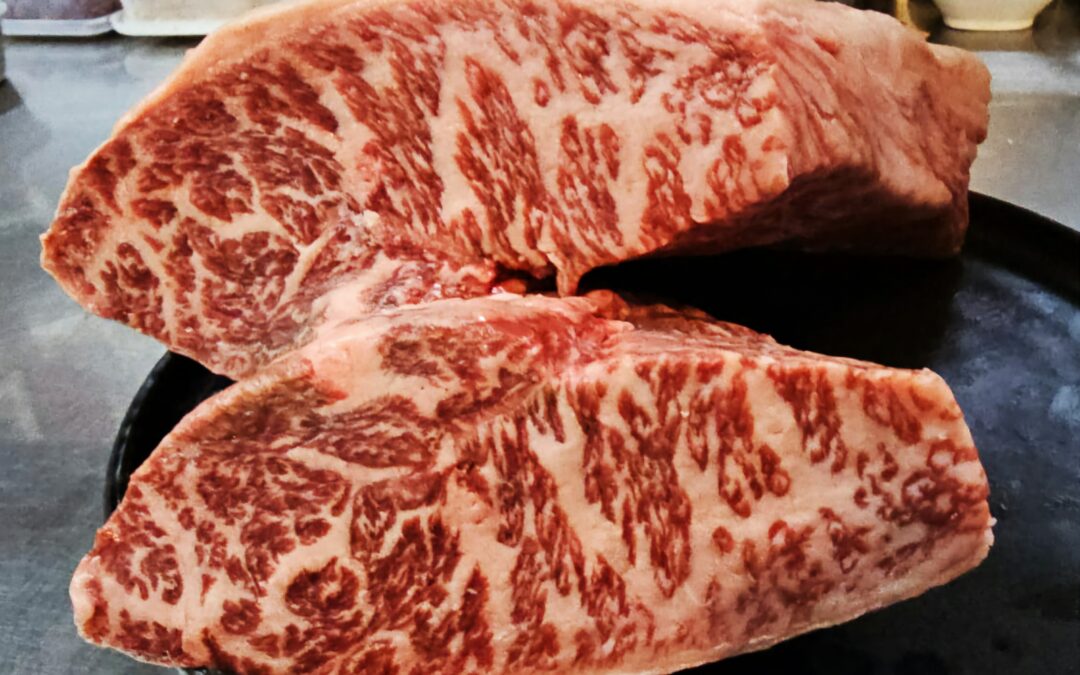
by lspeed | Jun 29, 2025 | KNOWLEDGE: MEAT ESSENTIALS
When people hear “Wagyu,” its birthplace Japan springs to mind, along with Australia – now the world’s second largest Wagyu producer. But over the past two decades, Wagyu cattle have been raised in many other parts of the globe. And while purists still swear by Kobe or Mishima, the Wagyu gene pool has officially gone global.
United States
One of the earliest adopters of Wagyu genetics outside Japan. Starting in the 1970s, full-blood Wagyu bulls and heifers were exported to the U.S., until Japan declared them a national treasure and closed exports. These animals were cross-bred with Angus cattle to create what is now widely marketed as “American Wagyu”, a hybrid typically consisting between 50 to 75% Wagyu. Known for decent marbling, but also for a bolder, beefier flavor that Americans tend to prefer. The cattle are usually grainfed for 400 – 500 days, offering consistency in size, texture, and affordability.
Chile
Chile is not often associated with Wagyu, but its pristine conditions and strong animal health infrastructure have made it a rising star in Wagyu. The country began importing Wagyu genetics in the early 2000s and focused on full-blood and F1 (50% Wagyu) crosses, typically with Angus or Hereford cows. What makes the product stand out is its environment. With access to clean water, temperate climate, and vast pastures, Chile can offer a low-stress life for cattle, which contributes directly to meat quality. Some Chilean producers are also experimenting with hybrid feeding programs that mix pasture and grain, hoping to strike a flavor balance between grass-fed brightness and grain-fed richness. Chile’s free trade agreements have also helped position it as a Wagyu exporter to the U.S., China – and even Japan.
United Kingdom
Wagyu farming in the UK is still niche, but it’s growing steadily among artisanal producers aiming to bring something different to the premium beef market. Most UK Wagyu is raised by small-scale farmers using either full-blood or high-percentage Wagyu crosses with native British breeds like Dexter or Shorthorn. These cattle are often grass-fed or reared on mixed rations with minimal grain. As a result, UK Wagyu can be leaner than Japanese product, but often carries stronger flavor with a provenance appeal. Producers focus on traceability, animal welfare, and breed integrity.
South Africa
South Africa’s beef industry has been built around native breeds like Bonsmara and Nguni, but Wagyu cattle have found a stronghold among producers looking to differentiate in export markets and high-end retail. The South African Wagyu Society was founded in 2014, allowing farmers to import full-blood genetics and to register cattle through a formal traceability program. Most producers rear their Wagyu on grain-based diets, with slaughter weights and marbling scores similar to those in the U.S. or Australia. South African Wagyu is now beginning to show up in Europe, the Middle East, and even parts of Asia.
Canada
Canada’s cattle industry is robust, and its embrace of Wagyu has been quiet but determined. Like their U.S. counterparts, Canadian ranchers often work with cross-bred Wagyu-Angus animals. But a small yet growing number of full-blood herds exist in Alberta and British Columbia. Canada’s cold climate presents both challenges and benefits. Harsh winters encourage farmers to house and carefully manage their herds, leading to close control over feeding, health, and growth. The result is beef that’s richly marbled, tender, and increasingly respected on the export scene. Canadian Wagyu producers are working to position their beef as a cold-climate delicacy, meaning distinctive in flavor, sustainable in scale, and aimed at premium retail and restaurant channels.
Other Notables
-
Germany and Poland have small Wagyu breeders, focused on local markets and chef collaborations.
-
Taiwan & South Korea have built up domestic Wagyu-style beef programs, using imported genetics and similar feeding regimens.
-
Argentina, known for its grass-fed steaks, is experimenting with Wagyu-Angus crosses. Marbling remains a challenge though with traditional pasture feeding systems.
-
New Zealand produces both full-blood and cross-bred Wagyu, often marketed as a grass-fed alternative with ethical branding.
Final Bite
Japan will always be the spiritual home of Wagyu, and Australia its largest international ambassador. But the category is no longer a two-player game. As consumers become more educated, the nuances will become part of the conversation, not just an afterthought. And that’s a good thing—for chefs, for diners, and for the breed itself.
Image Credit:
Home
_ _ _
© CHURRASCO PHUKET STEAKHOUSE / ALL RIGHTS RESERVED
Reprinting, reposting & sharing allowed, in exchange for a backlink and credits
Churrasco Phuket Steakhouse serves affordable Wagyu and Black Angus steaks and burgers. We are open daily from 12noon to 11pm at Jungceylon Shopping Center in Patong / Phuket.
We are family-friendly and offer free parking and Wi-Fi for guests. See our menus, reserve your table, find our location, and check all guest reviews here:
https://ChurrascoPhuket.com/
#Churrascophuket #jungceylon #phuketsteakhouse #affordablewagyu #wagyu

by Ross Kingsley | Jun 15, 2025 | KNOWLEDGE: MEAT ESSENTIALS
At Churrasco Phuket Steakhouse, we do not offer any meat substitutes, plant based “meat”, or lab grown proteins. But as an enterprise with a social conscience and with an eye on the future, we keep ourselves informed of developments in sustainable nutrition.
Lab-grown beef, also known as cultivated or cultured meat, has emerged as a revolutionary idea in the food industry. By growing meat directly from animal cells in bioreactors, this innovation aims to address some of the most pressing global challenges, such as food security, environmental degradation, and animal welfare. However, it is also a subject of intense debate, with significant hurdles to overcome.
The promise of lab-grown beef lies in its potential to reduce the environmental impact of traditional livestock farming. Conventional meat production contributes significantly to greenhouse gas emissions, deforestation, and water usage. Cultured meat could mitigate these issues, as it requires fewer resources and produces less waste. Additionally, it eliminates the need for animal slaughter, appealing to those concerned about animal welfare.
Despite its promise, lab-grown beef faces several challenges. One of the biggest is scalability. Producing cultured meat at a price and volume comparable to conventional beef remains a significant technological and financial hurdle. Current production costs are prohibitively high, with bioreactors and cell culture media being expensive to scale up. Furthermore, regulatory approval processes are complex, varying by country, and consumer acceptance is still uncertain. Many people are hesitant to embrace lab-grown products due to perceived unnaturalness or safety concerns.
Will lab-grown beef succeed? The answer depends on technological advancements, market acceptance, and regulatory frameworks. Governments and private investors are already pouring billions into research and development, showing confidence in its future. However, success also requires addressing ethical concerns, building public trust, and ensuring affordability.
In the long term, we predict that lab-grown beef will never replace traditional farming, but could complement it. By offering a more sustainable and ethical option, it has the potential to reshape the food industry and create a more balanced approach to meat consumption. Whether it fulfills its promise remains to be seen. We will keep observing.
_ _ _
© CHURRASCO PHUKET STEAKHOUSE / ALL RIGHTS RESERVED
Churrasco Phuket Steakhouse serves affordable Wagyu and Black Angus steaks and burgers. We are open daily from 12noon to 11pm at Jungceylon Shopping Center in Patong / Phuket.
We are family-friendly and offer free parking and Wi-Fi for guests. See our menus, reserve your table, find our location, and check all reviews here:
https://ChurrascoPhuket.com/
#Churrascophuket #jungceylon #phuketsteakhouse #affordablewagyu #wagyu
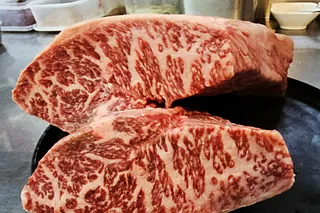
by Ross Kingsley | Jun 1, 2025 | KNOWLEDGE: MEAT ESSENTIALS
Wagyu, a term that loosely translates to “Japanese cow,” is more than just a type of beef—it’s a symbol of meticulous care, tradition, and distinct flavor. Originating in Japan, Wagyu beef comes from specific breeds of cattle—most notably Japanese Black, Japanese Brown, Japanese Polled, and Japanese Shorthorn. These breeds were initially used as draft animals in rice farming due to their endurance and strength. Over centuries, selective breeding, combined with Japan’s isolated geography, resulted in cattle with unique genetic traits that produced finely marbled beef, prized for its tenderness and rich flavor.
The history of Wagyu took a significant turn during the Meiji Restoration in the late 19th century. With Japan opening its doors to the world, foreign cattle were crossbred with native varieties to enhance certain qualities. However, strict regulations eventually ensured the purity of the Wagyu lineage, preserving its signature characteristics.
Today, Wagyu has transcended its Japanese roots, becoming a global phenomenon. While Japan remains the epicenter, offering legendary varieties like Kobe, Matsusaka, and Omi beef, Wagyu production has expanded worldwide. Countries like Australia and the United States have embraced Wagyu farming, often crossbreeding Japanese Wagyu with local cattle to create hybrids that retain the marbling of Wagyu while adapting to regional conditions. Australia, in particular, has become a major exporter of Wagyu beef, known for its slightly firmer texture and robust flavor.
In addition to traditional steakhouses, Wagyu is now featured in gourmet burgers, served as sushi, and even dishes like Wagyu sliders and tacos. Its journey from Japan to tables worldwide is a testament to its universal appeal and the dedication of farmers who continue to honor its storied heritage. Whether enjoyed at Churrasco Phuket Steakhouse, or elsewhere like Tokyo, New York, or Sydney, Wagyu remains a luxurious and unforgettable dining experience.
_ _ _
© CHURRASCO PHUKET STEAKHOUSE / ALL RIGHTS RESERVED
Churrasco Phuket Steakhouse serves affordable Wagyu and Black Angus steaks and burgers.
We are open daily from 12noon to 11pm at Jungceylon Shopping Center in Patong / Phuket.
We are family-friendly and offer free parking and WiFi for guests.
See our menus, reserve your table, find our location, and check all reviews here:
Home
#churrascophuket #jungceylon #phuketsteakhouse #affordablewagyu #wagyu


